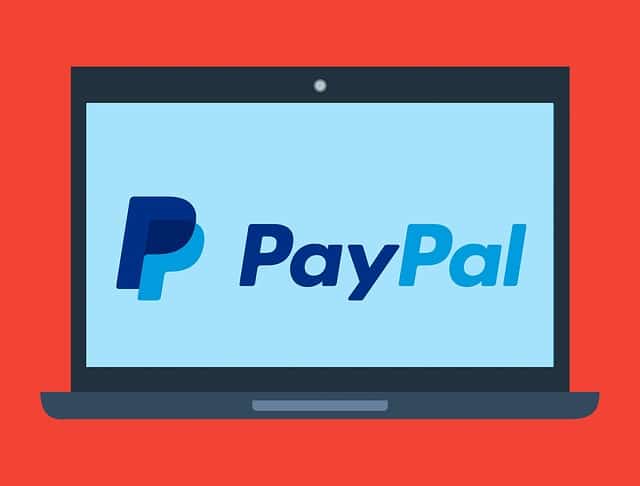Common PayPal Scams & How to Protect Yourself
Michelle Wilson - November 28, 2021

PayPal established itself early on as a trending money transfer platform, particularly in an era when online transfers and payments didn’t exist. Founded in 1998, PayPal consolidated the market threshold, dominating as an alternative to traditional paper-based transfers. With a global design, it profoundly roots in small businesses and freelancing industries. It’s essential to recognize that PayPal fails to rank among the safest online money transfer apps; it has its share of fraud. The seemingly lush atmosphere for theft, hacking, scheming, and other nasty interactions means potential trouble for users.
To protect yourself online, here are a few common PayPal scams and how to safeguard your account.
Table of Contents
Opening a PayPal account on behalf of a seller
Potentially the most common type of PayPal scam is when a seller hasn’t opened a PayPal account. A seemingly good Samaritan offers to open a report on the seller’s behalf. Still, after handing over details – the scam artist makes off with the account, banking details, and private information. On top of that, criminals scout online for potential victims through e-commerce platforms. This tactic has a potential buyer looking through online profiles, searching for those without a PayPal account. The buyer offers to make a substantial purchase but needs the payment through PayPal.
To help build “trust,” the buyer sends an email to a PayPal sign-up page. Unfortunately, this isn’t a genuine form – it’s a phishing attack to harvest personal information. Filling it out gives the “buyer” your name, location, personal address, billing or financial details, and driver’s license number. Hitting submit on the form sends the details to the scam artist. To prevent this type of attack, never open an email containing an invitation to set up a PayPal account.
Shipment Cannot Be Delivered
A hassle-free way to get someone to hand over funds is to report a shipment failure to PayPal. The breakdown of this scam is as follows: someone places an order for an item they found on your e-shop. They send the payment through PayPal, and when filling out the shipment details page, they supply a fake delivery address. Several failed delivery attempts happened with the order, causing the shipper to mark the package undeliverable.
After being notified of the failed delivery, the scammer supplies a new address to the courier. Once the buyer receives the box, they file a complaint with PayPal for non-delivery. PayPal sees the package was undeliverable, using Seller Protection to get a full refund. They ultimately get your goods and a full refund on the package.
Including a Little Something Extra
This tactic has a seller receive PayPal proof of payment from an undisclosed buyer. The buyer ultimately tries to contact the seller, saying he’s overpaid and would like a refund of the difference. Finally, there are two outcomes to this scam:
Scammer Hijacked Someone’s PayPal Account to Send the Payment
When the actual account holder realizes the account is compromised, he will file with PayPal. The platform will ultimately reimburse the charge in total. As a result, the seller loses the goods, and the “something extra” the seller was supposed to receive.
Scammer Uses Their Personal PayPal Account to Carry It Out
A scam artist orders an item and sends the payment through PayPal in this situation. The buyer starts complaining about the order (excessively). The criminal then contacts PayPal to complain about the transaction – whether it’s defective products, poor quality, or products not matching the ad. Ultimately, the buyer becomes eligible for a full refund. He keeps the items he ordered and receives the extra money.
Helping the Less Fortunate
This scam often pulls at the emotional heartstrings of individuals, typically posing as charities. A fraudster will contact individuals with a heartfelt message requesting aid. Most often, these resurface shortly after a natural disaster or artificial problem. The user leaches off the emotional do-gooders, pocketing the money you send.
Friend of the Family Request
We often get hit with money requests from friends and family, especially when financial unrest increases. PayPal’s “Family & Friends” option allows a quick payment with minimum fees. A scam artist takes advantage of this situation by contacting you and asking to send the money through this feature to avoid paying regular fees. Unfortunately, this function doesn’t allow Seller Protection. The seller gets the funds through this feature, avoids paying fees, and you’re without the money and product.
Intense Call-to-Action
A powerful call-to-action can cause an emotional response from a buyer, primarily if it’s well written. For those using email phishing, these CTAs are overzealous and colorful. They’ll often promise users anything they can to trick you into sending cash. Unfortunately, for those inexperienced buyers, failing to read the terms and conditions is quite problematic (high shipping rates, for example).
The Fake Invoice
The least popular PayPal scam is the fake invoice. These emails are so perfectly created it’s impossible to tell the difference between them. A user receives an email stating they have paid a fee or subscription, along with a link to the payment form. When the user clicks the link, nothing happens. Unfortunately, the link redirects users to a fake PayPal page, sending your credentials directly to a scammer.
Switch Out to Money Transfer
We’ve all heard of the bait-and-switch between genuine buyers and shady sellers. An individual contacts an online “shop” hoping to purchase a few items. When it comes time to pay the invoice, the seller requests a wire transfer or Western Union payment. Unfortunately, these methods don’t have clear refunding policies – meaning you’ll be without your money and your products.
Private Shipping Companies
This quick money-grabbing method involves a scammer requesting a private shipping company instead of your standard channels. In some cases, they’ll mention they own the shipping company. If the seller agrees, the buyer will reroute the transport. The PayPal shipping address doesn’t match so that the platform won’t cover a loss. The scammer then files a complaint about the shipping, and PayPal refunds the account.
The Suspended Account
This is another method of email spoofing, using a suspended email template. Unfortunately, this method is highly effective, convincing users to log in to regain access to their accounts. Once the credentials are entered into the website, the website gives an error message. The hacker keeps the login details while the victim is left without credentials.
Protecting Your Account from PayPal Scams
One of the easiest ways to protect your account is knowing common fraud attempts and how to stop them. Disclosing your account credentials, including username, password, or financial statements, is a huge problem for online safety. On top of that, never open any suspicious links or spam emails. Remember that if something sounds too good to be true, it likely is. Although there are many reasons for shipping to a different address, never ship outside of the registered address on file. Monitor your account for transactions or unrequested withdrawals. Don’t be afraid to offer a full refund on something that feels amiss.
Conclusion
While PayPal is a popular payment platform, it isn’t without risk. Protect your account whenever possible by recognizing these hacking and phishing attempts. Finally, always confirm the direct email address on any correspondence you receive from PayPal. Ensure it reads as support@paypal.com; any variations of spelling or suffix are a phishing attempt.












